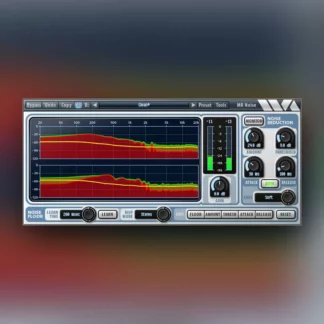Wave Arts MR Noise 6
$69.00
MR Noise
MR Noise is a broadband noise reduction processor. It distinguishes itself by being both great sounding and incredibly easy to use. Like most noise reduction systems, MR noise works in the frequency domain, and requires that the noise spectrum be learned before noise reduction can commence. If your track starts with a bit of silence then MR Noise will work right out of the box, since by default MR Noise has the Learn parameter enabled, then when you hit play, MR Noise will learn the noise profile and start noise reduction. The default parameters work extremely well for most cases. One of our reviewers thought something was wrong because they opened up MR Noise and the noise vanished – and they didn’t have to do anything.
When designing MR Noise, we spent considerable effort researching and experimenting with existing noise reduction algorithms. MR Noise combines the best of these with some new innovations, especially our Auto Dynamics mode. This mode automatically adjusts the attack and release times of the noise reduction processor based upon the amount of transients in the input signal. This minimizes artifacts in the noise reduction processing while maintaining sharp transients that would normally be smeared by other methods.
The user interface makes it a snap to see and hear what is going on. The frequency response display shows the spectrum of the input signal, noise floor, and output signal so you can see at a glance what frequencies are being reduced. A monitor feature allows you to hear the noise that is being removed (with separate volume control). For most cases you simply have to select a preset and hit play, MR Noise will learn the floor and start reduction. Then you can simply adjust the Amount control to set the amount of reduction. For super fine tweaking, the noise floor and all the reduction parameters can be edited as a function of frequency by dragging control points on the frequency response display.
HIGHLIGHTS
- Frequency spectrum based noise reduction
- Low latency (under 20 msec), hence can be used in live situations
- Fast noise floor learning time (down to 50 msec), hence noise looping is not required
- Auto dynamics mode keeps transients sharp while avoiding squirrelly artifacts
- Monitor feature to hear removed noise
- Comprehensive display shows spectrum of input signal, output signal and noise floor
- Noise floor can be manually edited
- Parameters can be edited as function of frequency
- Latency compensation via compatible hosts
- Up to 192 kHz sampling rate
- Mono or stereo






